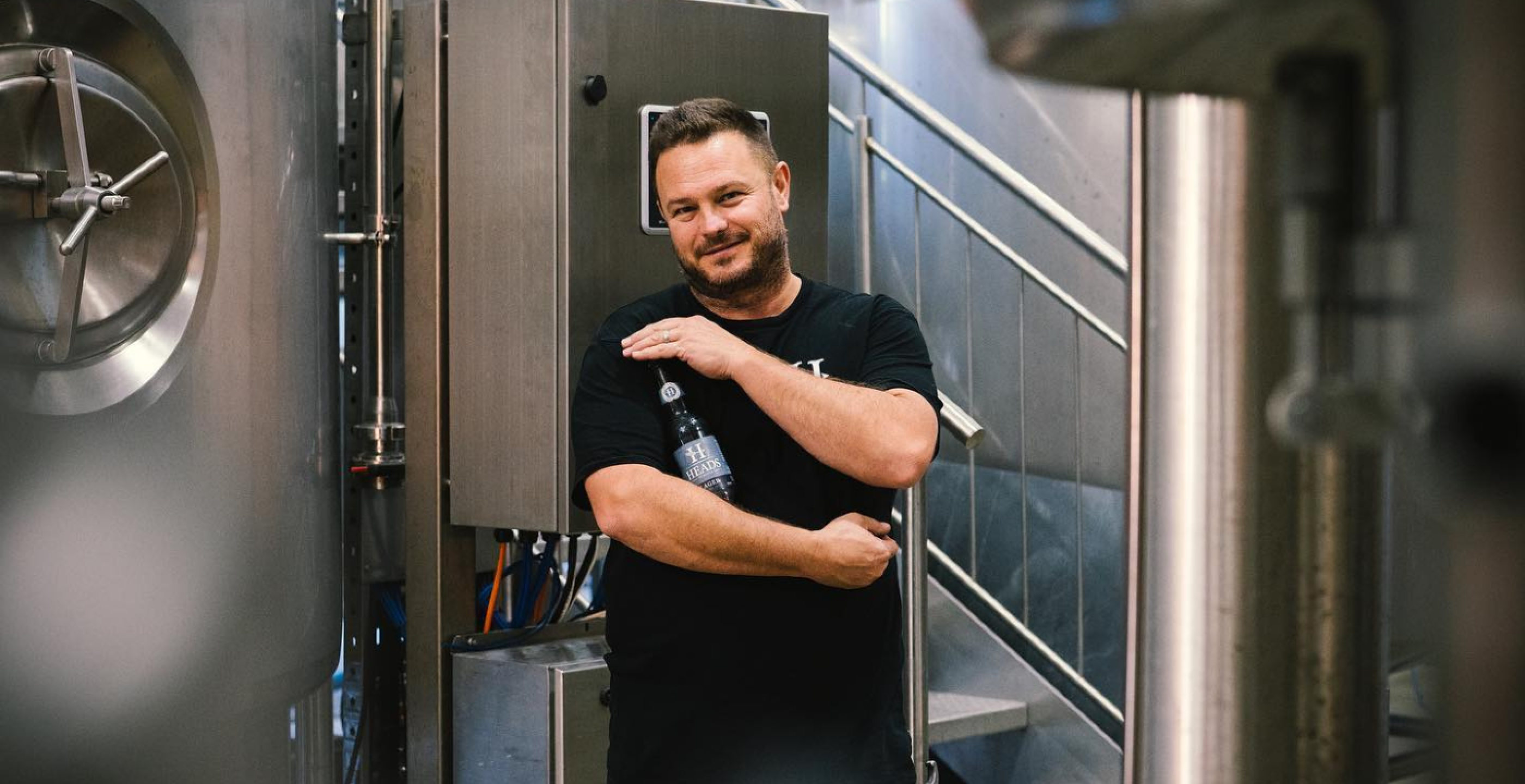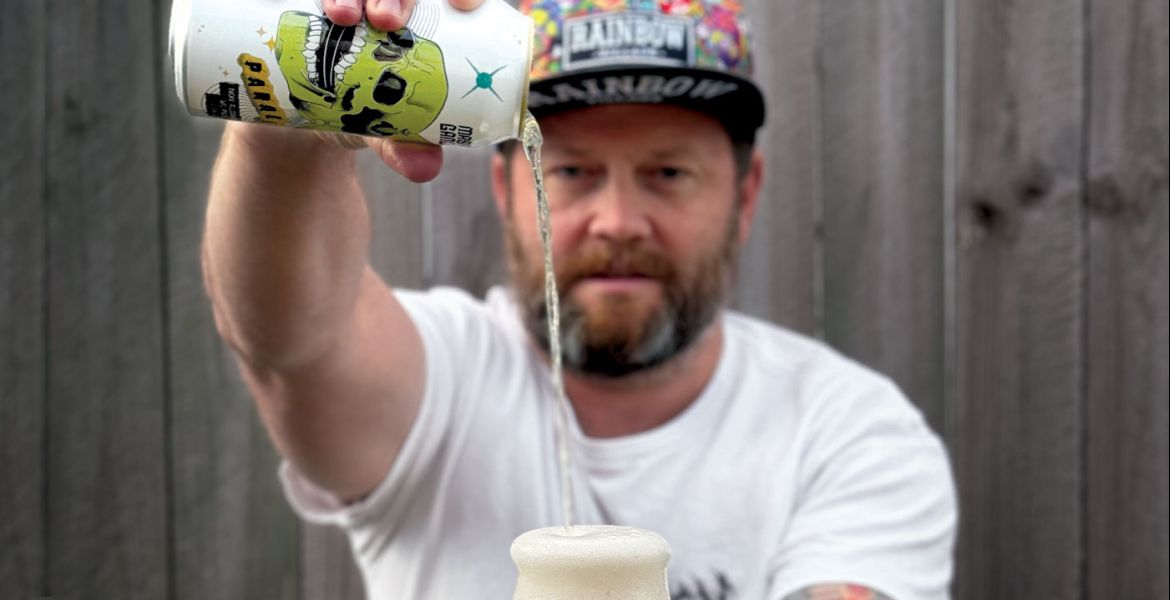In recent years, lagers have enjoyed a renaissance among the country's smaller breweries – and drinkers of a crafty bent too. While cervezas, or Mexican-style pale lagers, have attracted the most attention, there's another form of internationally-inspired lager cropping up with ever-greater frequency.
Here, Mick Wüst explores the world of Japanese rice lagers. In the first part, he looks at their origins, how they're made, and asks why they've been gaining in popularity in Australia. In part two, he speaks to some of those experimenting with the style and wonders just where they sit within the multifaceted modern Aussie beer world.
When I go to an Italian restaurant, I drink an Italian beer. When I go to a Mexican restaurant, I drink a Mexican beer. When I go to a Japanese restaurant, I drink a Japanese beer – and, almost without exception, it's a rice lager.
That rice lager doesn’t demand I think about it while I’m laughing with my friends before the meal. It wipes my palate clean of the potent soy sauce on my gyoza. It cuts through the curry sauce. It highlights the heat of the tiny bit of wasabi I’ve been game enough to put with my food. And then, when I leave the restaurant, I don’t think about rice lagers again until next time I’m at an Asian restaurant.
So I confess: I’ve put Japanese rice lager in a box. And I expect I’m not the only one.
Sure, there are plenty of people in Australia with drinking habits different to mine, and some would happily stock their fridge with a carton of Asahi Dry or Sapporo. But beers whose main descriptors are "light" and "dry" and "crisp" have been considered anathema for much of the craft movement, and many brewers have only made one begrudgingly to suit the customers who walk in and ask for "something like Great Northern".
That’s changing, however.
The last few years have seen a rise in easy-drinking lagers in general in the craft world, most notably those tagged Mexican lager or cerveza, and Japanese-style rice lagers seem to be popping up left, right and centre too. (That said, 2 Brothers in Melbourne were ahead of the pack here: Kung Foo Rice Lager has been standing tall in their regular lineup for more than a decade.)
Some breweries are releasing them as one-offs, while others are incorporating them into their core range. And, unless there’s been a slew of Japanese restaurant openings of which I’m unaware, the brewers making these beers aren’t designing them solely to be consumed with Japanese food.
Rice lagers are breaking out of the box. It’s time we got to know them a little better.
What Are They?
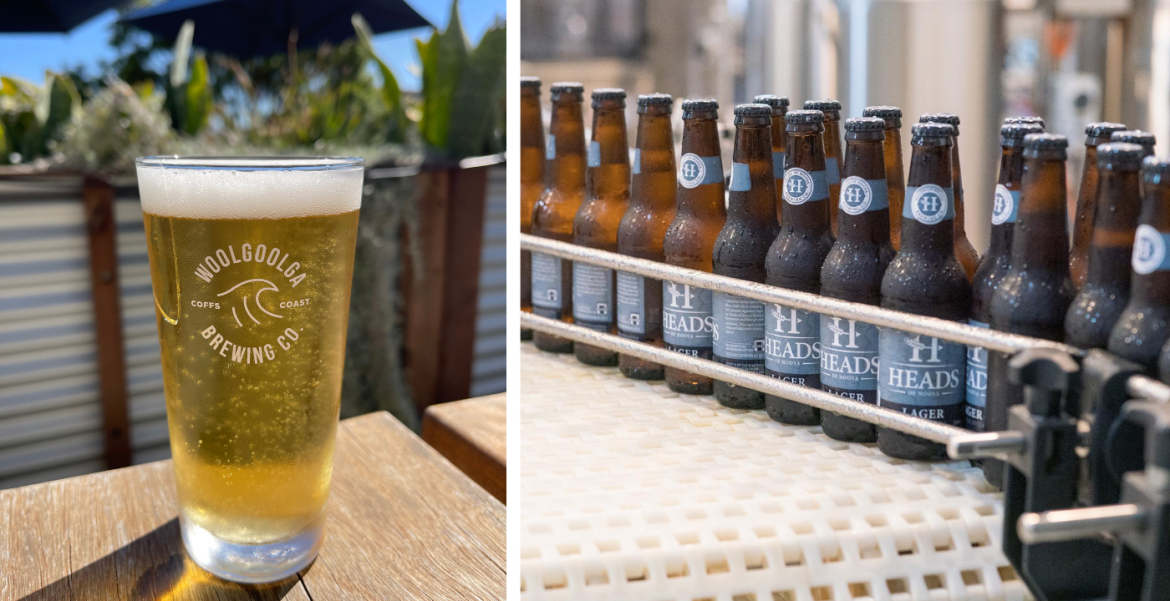
If a brewer or beer nerd wants to know what a particular beer style is or should be like, they often turn to the BJCP Style Guidelines or the US Brewers Association's equivalent; around the world, such guidelines are commonly used when judging beer in competitions, with the documents becoming a kind of beer style bible.
But you won’t find Japanese rice lager in these holy texts. The best you’ll find is "international pale lager" in the BJCP guide*, and "International-Style Pilsener" in the BA's guide, which are catch-alls for light lagers around the world that may or may not use adjunct grains (grains other than barley malt). And, while these beers share some characteristics, they’re not the same.
So what makes a Japanese-style rice lager?
- They contain rice to supplement the malt; usually up to a third of the grain bill is made up of rice.
- They generally use traditional European hops, which may bring herbal or spice character, though occasionally they might use a small amount of citrusy hops.
- They use lager yeast (obviously); the goal here is to have a strain that eats up as much of the sugars as possible, and gives off basically no flavour.
- They’re a pale straw to pale golden colour, and perfectly clear.
- They’re light in flavour: a careful construction of delicate malt flavour and sometimes subtle hop notes. There might be a mild sweetness, and there’s generally a soft bitterness but too much malt or hop character tends to be undesirable.
- They’re dry. The rice is good for drying out the body, which is responsible for that light and crisp character in the mouthfeel.
- They’re fairly highly carbonated.
- Most sit between 4 and 5 percent ABV.
As to the origins of the style: if you haven’t realised yet, this style of rice lager was born in Japan.**
Japan’s introduction to beer came via European traders in the 1600s, but it wasn’t until the 1800s that breweries started opening in Japan: Sapporo, Kirin (which owns Lion in Australia) and Asahi (which owns CUB) all date back to this time. Breweries used German and Dutch brewing methods, and the beers reflected the lagers of Europe.
While Japan's famed sake is brewed with rice, its use in beer took off in the latter part of the 20th century, notably as the country's brewers moved towards creating the drier styles for which they're now best known globally.
The barley types most commonly grown in Japan – six-row or two-row/six-row hybrids bred for disease-resistance – can create unwanted characteristics in beer, such as excess proteins and undesirable flavours; by adding rice, brewers were able to dilute these unwanted elements while creating lighter, crisper beers – just as American brewers had been doing with beers such as Budweiser for decades beforehand.
What's more, since the authorities tax beer based on how much malt was in it, brewers found they could pay less lax by substituting out a portion of the malt for rice.***
When it comes to those produced by Australian brewers, it's the character of rice lagers they are trying to capture: the delicate flavours, the light body, the dry finish. And yes, these beers can capture something of Japan in our imaginations as well.
What are they like to brew?
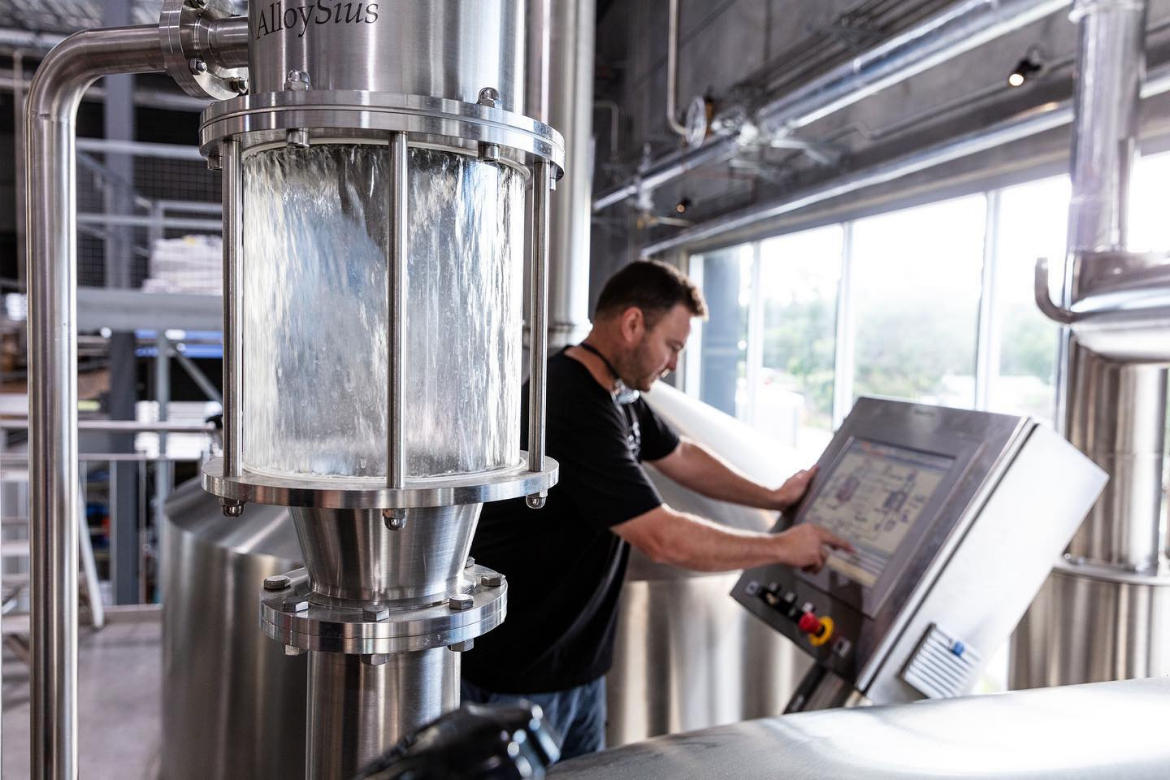
When it came time to look into the brewing process for this kind of beer, it made sense to look to the indie brewery that’s probably making more rice lager than any other: Heads of Noosa, the Sunshine Coast brewery that exclusively makes lagers.
For co-owner and head brewer Lance Masterton, making Heads of Noosa’s flagship Japanese-style lager is a labour of love.
“For us, it’s the pinnacle of beer. We’re just trying to do it justice,” he says.
While the brewing of most beers begins with mashing in (mixing malt with hot water), Heads of Noosa’s rice lager begins with – you guessed it – rice.
“Every time we can, we use Australian-grown rice, long grain or medium grain,” Lance says. “Exactly as you buy it in the shop, not rolled or flaked.
“How much rice? Just the right amount,” he laughs. “That’s proprietary.”
Rice needs to be gelatinised before it has sugars available for fermentation. Rolled rice and flaked rice are pre-gelatinised, so some brewers will use those products and skip the gelatinisation step. But Heads of Noosa had Japanese lager in the front of their minds when they were setting up their all-lager brewery, so designed it to give them as much control over the process as possible.
“We gelatinise that in our mash kettle, then cool it back down to get it to a strike temperature when we mash in on top. Gelatinising that rice allows the enzymes out of the malt to convert starches [in the rice] to sugars," Lance says.
“It is a lot longer mash process for us. We’re trying to get that light, crisp body, and the gelatinisation of the rice is a contributor.
“It does take a bit extra, but it’s worth it.”
Lance says the rest of the production is basically the same as with any beer. But he goes on to describe how the delicate nature of Japanese rice lager means this beer needs the utmost care in every way, even compared to other lagers.
“Looking after the beer throughout the whole process is really of paramount importance, because at the end of it you do see ramifications of the whole process.”
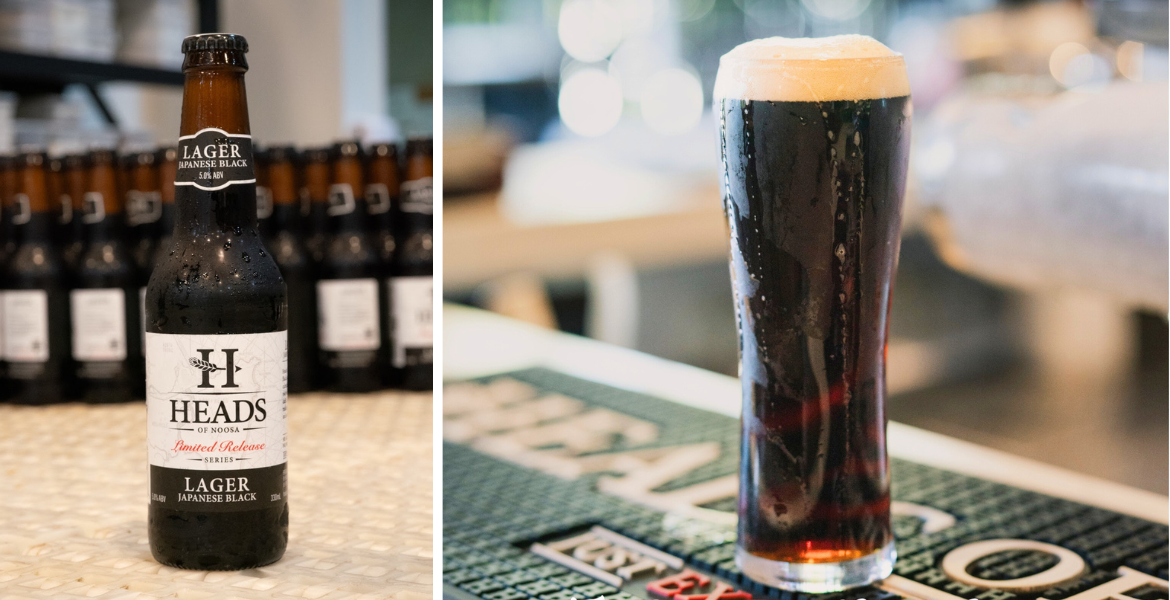
For Heads of Noosa, the "whole process" started right back when they were designing their brewery – they gave special attention to their conveyor to guard against contaminants in with the malt, which could add their own flavours.
They also look after the water to ensure they don’t get astringency from the tannins in the malt husk.
“Stuff does stand out very clearly. After six beers, if people aren’t enjoying it, they won’t go back to it. You have to be meticulous with the process."
Lance speaks of the quality of the bitterness in the beer: “It has low IBUs, but there’s different kinds of bitterness that are more subtle… You still do want that bitterness, but don’t want it to be a harsh, lingering style.”
As with any pale lager, the fermentation has to be suitably cold so as not to gain flavour from fermentation, and Heads of Noosa usually lager their flagship beer for four or five weeks – or, if the yeast is a bit subdued in the cold fermentation, up to six or seven weeks – to ensure the finished product as is clean as they require.
Another part of the process Lance insists on is one that’s become less common than it once was: filtering.
He says it’s a double-edged sword; if an unwanted flavour comes into the beer at any part of the process, the yeast in an unfiltered beer can help to mask it. But he loves the brightness that filtering brings to their rice lager, and the way it allows the other ingredients to shine.
“Get the clean fermentation, but get the yeast right out of the beer so you get to see [read: taste] the malt and rice and hops in there."
Why Are They Growing In Popularity?
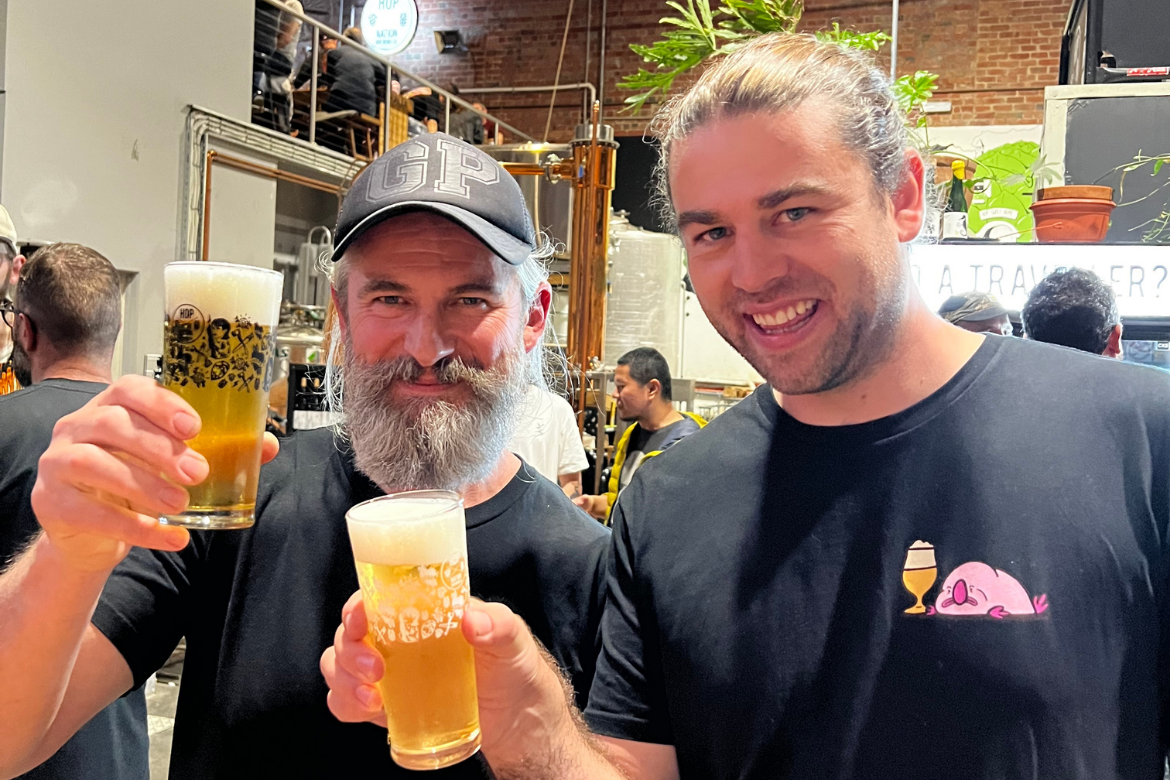
Aussie brewers are all over this style of lager like white on... well, you know. Why are rice lagers everywhere all of a sudden?
“To be honest, I think people have seen the success we’ve had with it to a point,” Lance says. “I’d like to think we’ve paved the way a little bit there!
“But whether [that’s the reason] or not, we’ve seen 15 tap rice lagers pop up in the last six to 12 months.”
Again, whether or not Heads of Noosa’s significant and visible success with their Japanese-style lager has influenced other brewers, there have been a couple of broader patterns leading to the growth of this style.
The first reason: the quality of lagers from Australian craft breweries has improved significantly.
When Melbourne’s Hop Nation released their first beers in 2016, lager was a dirty word for many in craft beer circles (although they did release an NZ pilsner as part of their opening salvo). Brewery co-owner Duncan Gibson reflects on the way many brewers would only brew a lager to satisfy those drinkers who showed up at their taproom asking for a "normal beer".
“In the past, lagers have been done really poorly,” he says. “[Craft brewers] didn’t lager it properly, fermented it a big hotter to get it out of tank faster. We didn’t care a lot. Now, a lot of brewers are crafting a good lager. The difference between a good lager and one that’s been pushed out to fill a gap in the market is huge.”
To make Rattenhund, the trophy-winning pilsner that Hop Nation first released in 2021, the brewing team underwent a lager-focused deep dive, fine-tuning their water chemistry and zeroing in on the right fermentation temperatures and lagering times. Dunc says this upskilling has improved their beers across the board, even in styles like hazy IPAs.
But it also spurred them on to make more great lagers, and they applied the knowledge they gained directly to the rice lagers they’ve since made: first Yama, the rice lager they made with yuzu and Citra hops in 2021, then the traditional rice lager they made for GABS in 2023.
“Compared to ten years ago, we have the ability to craft these beers really well. The knowledge base is higher. Most breweries now have a centrifuge. We’ve been able to invest more in [our equipment], have the ability to do decoction mash. We have a lot more tools to be able to craft on.”
Dunc has huge respect for the rice lagers he tasted when he visited Japan.
“When you look at those huge Japanese breweries, you can’t get much better than what they’re doing. They do a hell of a good job of it.”
However, Dunc says smaller breweries have an advantage over the macro breweries in Australia (who brew big name rice lagers under contract): they’re able to use more expensive and premium ingredients, and they use some traditional techniques that aren’t viable options for the commercial giants, such as long fermentation and flexible lagering periods.
“All that is time and precision,” he says. “We’ve got the option to give it more time in tank to really come together. With some bigger commercial breweries, they use different methods like fermenting under pressure to lager quicker.
“It’s our attention to detail. We can give it time, and tweak it to make it good.”

It’s one thing for craft brewers to make good lagers; it’s another thing for the market to accept them. Supply and demand have to go together.
Which brings us to a second reason rice lagers are popping up everywhere. To the delight of lager-loving brewers, the last few years have seen an increased demand for easy-drinking pale lagers, and rice lagers land right in that zone: delicate flavours, super clean and crisp, a sessionable strength.
“From an industry perspective: we’ve kind of gotten over ourselves a bit,” Dunc says. “At the start, everyone was really pushing for the weirdest shit. Sometimes the weird shit’s good, but quite often you miss the mark.
“If you’re a consumer, you want to try a few weird things, but you also want a beer you can sit around the barbie with.”
Dunc is largely talking about the Australian craft beer industry, but he’s also noticed the rising trend for lagers in the US over the past several years. Craft brewers over there are seeing success with more pilsners, helles, and yes, Japanese-style rice lagers too. It’s no surprise Australia would follow, as we do for plenty of beer trends.
As Lance acknowledges: “People have reverted back to drinking more easy-drinking beers, and dabbling into other more full-flavoured beers less regularly, rather than a mainstay.”
Along with many craft breweries, Heads of Noosa are broadening their target market; while mainstream lager drinkers have shied away from craft beer in the past, seeing them as "weird" or heavily-flavoured, a growing number of such drinkers are now happy to buy their easy-drinking beers from local, independent breweries.
“There’s a larger population out there,” Lance says. “Above 80 percent of the market is still drinking lagers.”
That's it for part one of our guide to Japanese rice lagers. In part two, we focus on the brewers experimenting with the style, and consider where they sit in the modern Australian beer market.
*The BJCP guidelines also describe the entire category as "industrial, mass-market lagers", which assumes a brewer would never make a small batch of this kind of beer. There’s an implicit judgment here: why would anyone ever want to make beers like this other than to sell millions upon millions of litres to undiscerning drinkers?
**American-style lagers can also use rice as an adjunct – think Budweiser – and a few Aussie brewers have released one-offs of these in recent years, but they certainly haven’t taken off in the same way.
***As an aside, it’s interesting how much taxes have shaped the history of beer. For example, taxes are responsible for hops becoming popular in the 1500s over other herbs and spices, and for beer taking over from gin as the drink of choice in London in the 1700s.
You can read about other beer styles in The Crafty Pint's Beer Knowledge section here.




